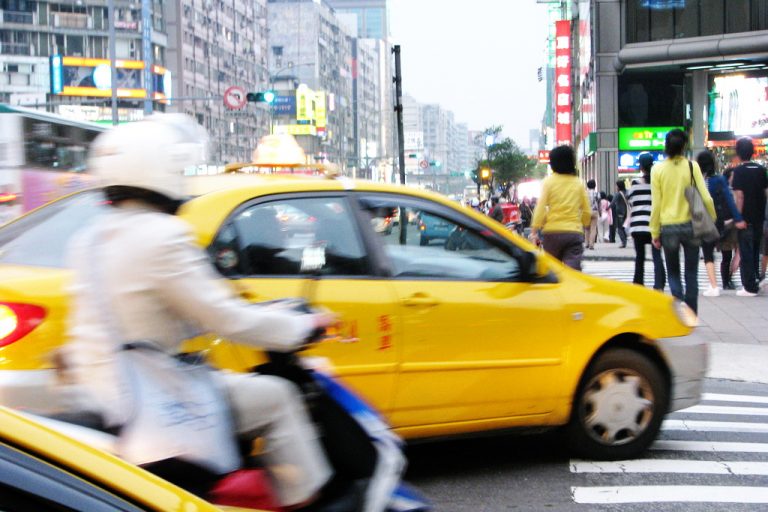The Ma Administration represented the end of the golden age for Taiwanese in China. Overall trade grew under Ma. However, trade ballooned far faster under the Chen Administration and Taiwan businessmen did much better. What happened in the “ballooning” Ma era? Trade grew from $98.2 billion and peaked at $130.1 billion. Using that peak, the best gain was just $32 billion, less than half the Chen Administration figure. Through 2015 the total net gain was a paltry $17.1 billion.
Published with permission. Read the original article here…
Ah, the Economist, still carrying a torch for Ma Ying-jeou. The most recent piece, Sizing Tsai Up, contains all the journalistic tropes we know and love.
When the media lies, it usually does so by key omission, and the Economist is no exception. Consider this paragraph:
As for trade with China itself, it ballooned under the outgoing president, Ma Ying-jeou (as did Chinese tourism to the island). Indeed, Taiwan is one of very few countries to run a trade surplus with China, thanks mainly to contract manufacturing and exports of capital equipment. Yet many Taiwanese resent the relationship, along with the cross-strait trade and economic agreements that multiplied under Mr Ma. Indeed the signing of a services agreement led two years ago to the “sunflower” movement of protesters, who argued that the deal would lead to China’s exerting undue influence on Taiwan. The movement, and subsequent student occupations of the Legislative Yuan, greatly undermined Mr Ma’s presidency.
Of course everyone recognizes the first sentence, it’s a common trope. Yes, overall trade grew under Ma. What none of these “journalists” ever notes is that it ballooned far faster under the Chen Administration and Taiwan businessmen did much better. The Ma Administration represented the end of the golden age for Taiwanese in China.
The trade numbers are available on the Bureau of Trade website (go to SEARCH BY VALUE, set the country to China, and select the years you want). Even writers for the Economist should be able to find them. Let’s look….
First, the total trade numbers for China in billion US$ (column 2) and growth rate (column 3)(w/o HKK and Macau)(trade with Hong Kong was $33 billion in 2000, peaked at $44 billion in 2014, and fell back to $39 billion in 2015. Trade with Macao is not very large.)…
2000 10,440,540,918 47.82
2001 10,798,076,970 3.424
2002 18,495,033,007 71.281
2003 33,907,784,754 83.335
2004 53,140,562,278 56.721
2005 63,736,408,872 19.939
2006 76,590,504,462 20.168
2007 90,430,526,782 18.07
2008 98,273,497,890 8.673
2009 78,670,764,058 -19.947
2010 112,879,654,027 43.484
2011 127,555,177,571 13.001
2012 121,621,186,471 -4.652
2013 124,376,057,324 2.265
2014 130,158,219,397 4.649
2015 115,392,430,915 -11.344
Note that trade under Chen skyrocketed from $10.4 billion in 2000 to $98.2 billion in 2008, or a gain of nearly $88 billion. What happened in the “ballooning” Ma era? Trade grew from $98.2 billion and peaked at $130.1 billion. Using that peak, the best gain was just $32 billion, less than half the Chen Administration figure. Through 2015 the total net gain was a paltry $17.1 billion (115.3-98.2). To put those numbers in perspective, in the two years between 2002 and 2004, trade gained $35 billion (in fact, trade gains were larger than the entire Ma Administration in almost any two year period in the Chen Administration). Nor did the Chen Administration experience any negative trade growth.
Indeed, as my son pointed out to me as I wrote this post, trade basically stagnated during 2011 to 2014, with a net gain of just $3 billion during those 4 years, or about what a Taiwan businessman spends on drinks with his buddies during a Saturday night out in Shenzhen.
Of course, the sharp-eyed among you will note that in 2010 ECFA was signed. That’s right, since ECFA came into force, trade with China has stagnated and then fallen. And that’s what the Economist calls “ballooning.” Well, perhaps the Economist calls it “ballooning” because there is so much hot air in its claims…
But let’s look at that next omission by the Economist.
Indeed, Taiwan is one of very few countries to run a trade surplus with China, thanks mainly to contract manufacturing and exports of capital equipment.
Yes, we do run a trade surplus with China. Here are the numbers (US$billions, China only):
2000 -2,005,682,704 0.819
2001 -1,007,492,002 -49.768
2002 2,558,443,421 -353.942
2003 11,872,821,076 364.064
2004 19,557,486,938 64.725
2005 23,550,236,834 20.415
2006 27,025,853,070 14.758
2007 34,402,295,404 27.294
2008 35,492,565,742 3.169
2009 29,825,438,414 -15.967
2010 40,989,496,995 37.431
2011 40,363,622,351 -1.527
2012 39,806,327,025 -1.381
2013 39,199,232,438 -1.525
2014 34,080,427,333 -13.058
2015 27,026,406,849 -20.698
What the Economist doesn’t say is screamingly obvious: since ECFA was signed the trade surplus has plummeted. Compare: the 2015 trade surplus is nearly identical to the 2006 trade surplus. ECFA is clearly “working as intended”.
If you mention the trade surplus and Taiwan in the Ma Administration, but omit that it has fallen since Ma’s centerpiece legislation was signed and all but two years during the Ma Administration… no need to complete that sentence.
The article constantly attempts to position the Ma Administration as economically successful, but opposed by those “hardline” Taiwan independence types solely for political reasons. It never mentions that the anti-ECFA and services pact forces were motivated by the economic effects of increased integration with China. Once it had committed to the lie that trade was awesome, it was inevitable that it could only explain opposition to increased integration in terms of independence politics. Sad.
Once again, Economist, you have my gratitude. It is because of lazy, trope-ridden, pro-China reporting like this that my blog and other Taiwan-centered websites continue to be useful for and popular with academics, analysts, and media workers. Thanks, guys!




